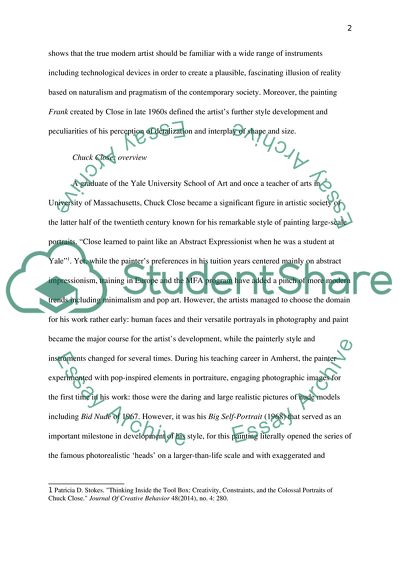Cite this document
(“Chuck Close And Photorealism Research Paper Example | Topics and Well Written Essays - 2250 words”, n.d.)
Chuck Close And Photorealism Research Paper Example | Topics and Well Written Essays - 2250 words. Retrieved from https://studentshare.org/visual-arts-film-studies/1702298-chuck-close-and-photorealism
Chuck Close And Photorealism Research Paper Example | Topics and Well Written Essays - 2250 words. Retrieved from https://studentshare.org/visual-arts-film-studies/1702298-chuck-close-and-photorealism
(Chuck Close And Photorealism Research Paper Example | Topics and Well Written Essays - 2250 Words)
Chuck Close And Photorealism Research Paper Example | Topics and Well Written Essays - 2250 Words. https://studentshare.org/visual-arts-film-studies/1702298-chuck-close-and-photorealism.
Chuck Close And Photorealism Research Paper Example | Topics and Well Written Essays - 2250 Words. https://studentshare.org/visual-arts-film-studies/1702298-chuck-close-and-photorealism.
“Chuck Close And Photorealism Research Paper Example | Topics and Well Written Essays - 2250 Words”, n.d. https://studentshare.org/visual-arts-film-studies/1702298-chuck-close-and-photorealism.


